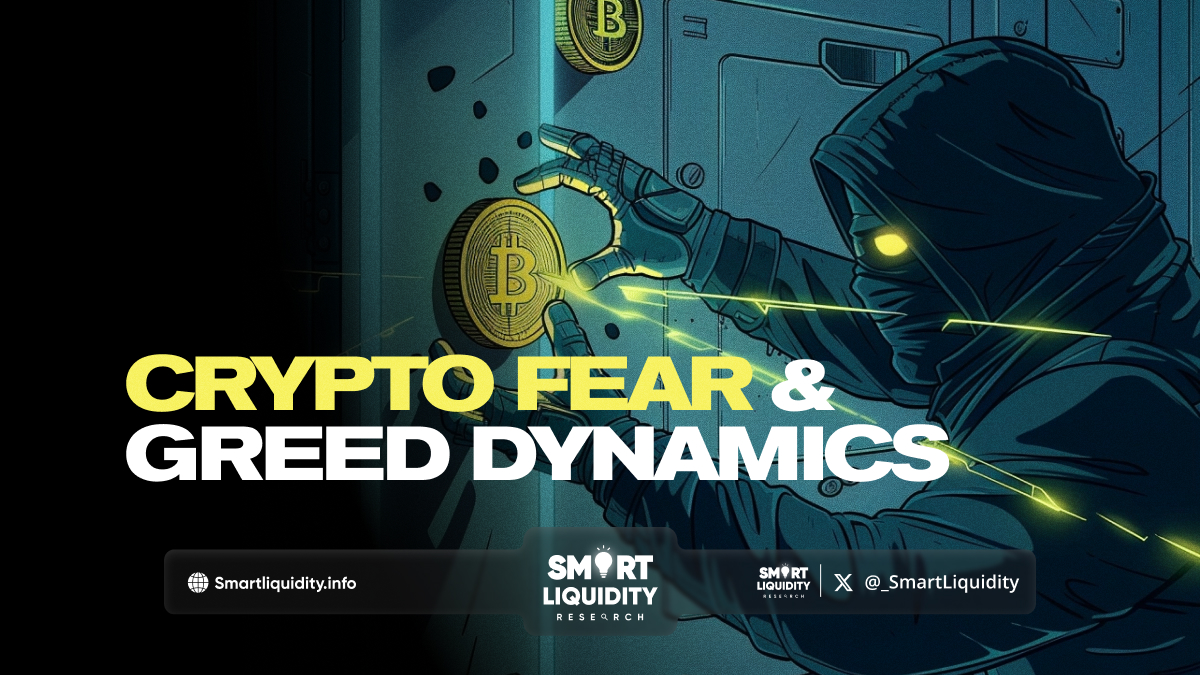The Fear & Greed Index on Crypto Investors


Cryptocurrency’s volatile nature fosters emotional investing. The Fear & Greed Index aims to assess market sentiment and aid rational decision-making. Yet, its efficacy depends on grasping the intricate psychology of crypto investments and how the index impacts investor actions.
Psychological Factors Driving Crypto Investment
Cryptocurrency investment decisions are rarely purely analytical. Fear of missing out (FOMO) – the feeling of regret at not capitalizing on a potential gain – can lead to impulsive buying during bull runs. Conversely, fear, uncertainty, and doubt (FUD) – negative media coverage or market downturns – can trigger panic selling. These emotional responses are exacerbated by the anonymity and rapid price fluctuations inherent in the crypto market.
Beyond FOMO and FUD, overconfidence and the desire for quick wealth can also play a role. New investors, enamored by stories of overnight millionaires, may overestimate their knowledge and risk tolerance. This can lead to chasing volatile meme coins or disregarding fundamental analysis in favor of speculative trends.


Fear and Greed Index Calculation
The Fear & Greed Index uses seven different metrics to calculate a score between 0 (Extreme Fear) and 100 (Extreme Greed). Each metric is assessed on a scale of 0 to 100 and then equally weighted to arrive at the final Fear & Greed Index score. Here’s a breakdown of the metrics involved:
- Market Volatility: This measures how significantly the price of Bitcoin (BTC) is fluctuating. High volatility (rapid price swings) suggests greater fear, while lower volatility indicates calmer market conditions.
- Market Volume: This metric analyzes trading volume on cryptocurrency exchanges. Unusually high volume can signify heightened fear or greed, depending on the market direction. Conversely, abnormally low volume might indicate complacency or a lack of conviction.
- Social Media: The index considers the overall sentiment expressed on social media platforms regarding cryptocurrencies. Positive sentiment leans towards greed, while negative sentiment suggests fear. Tools are used to analyze the tone and volume of social media discussions.
- Surveys: The Fear & Greed Index incorporates data from surveys conducted among investors to gauge their current feelings about the market. These surveys directly capture investor sentiment and can reveal underlying anxieties or excitement.
- Dominance: This metric analyzes the percentage of the total crypto market capitalization that Bitcoin represents. A rising Bitcoin dominance might suggest fear, as investors seek refuge in the perceived safety of the leading cryptocurrency. Conversely, a decline in dominance could indicate a shift towards altcoins, potentially fueled by greed.
- Stock Price Momentum: This metric compares the current price of the S&P 500 stock market index to its historical performance, typically a 125-day moving average. A strong stock market performance might correlate with investor confidence in riskier assets like cryptocurrency, suggesting greed. Conversely, a weak stock market could trigger fear and a flight to safer havens.
- Put and Call Options: The Fear & Greed Index considers the trading volume of put and call options on Bitcoin futures contracts. Put options are used to hedge against price declines (fear), while call options reflect bets on price increases (greed). A higher volume of put options suggests fear, while a higher volume of call options indicates greed.
By combining these diverse metrics, the Fear & Greed Index aims to provide a comprehensive picture of the emotional state of the cryptocurrency market at any given time. However, it’s important to remember that the index is just one data point and should be used in conjunction with other analytical tools for informed investment decisions.
Fearful Newbies vs. Greedy Veterans: How the Fear & Greed Index Impacts Different Investor Types
The Fear & Greed Index can impact different investor types in contrasting ways. Novice investors, still navigating the emotional rollercoaster of the crypto market, may place undue weight on the index. A low score might embolden them to invest during a dip, while a high score could trigger panic selling. This reliance on a single metric can lead to impulsive decisions that contradict long-term investment goals.
Seasoned crypto investors, on the other hand, may use the index as a confirmation tool. A low score during a market downturn might reinforce their existing belief in a buying opportunity. Conversely, a high score coinciding with a rising price trend could encourage them to take profits or rebalance their portfolios. However, experienced investors understand that the index is just one data point and should be used in conjunction with fundamental and technical analysis.
Using the Fear & Greed Index to Develop a Contrarian Investment Strategy
The Fear & Greed Index can be employed by investors seeking to develop a contrarian investment strategy. Contrarian investing involves betting against the prevailing market sentiment. When the index indicates extreme fear, investors may view it as an opportunity to accumulate undervalued assets at a discount. Conversely, a period of extreme greed could signal a time to sell or hold existing positions to avoid potential losses during a correction.
However, implementing a contrarian strategy based solely on the Fear & Greed Index is risky. Market sentiment can shift rapidly, and the timing of entry and exit points remains crucial for success. Additionally, factors beyond investor fear and greed, such as regulatory changes or technological advancements, can significantly impact the crypto market.
Beyond Fear & Greed: Additional Factors Influencing Crypto Investor Emotions
The Fear & Greed Index offers a valuable snapshot of market sentiment, but it doesn’t encompass all the emotional factors influencing crypto investors. Here are some additional considerations:
| Factor | Description | Impact on Investor Emotions |
| Regulation | Uncertainty surrounding government regulations can lead to fear, uncertainty, and doubt (FUD). | Can cause investors to hold off on entering the market or trigger panic selling. |
| Media Hype | Excessively positive or negative media coverage can significantly sway investor sentiment, regardless of the underlying fundamentals. | Positive hype can inflate asset prices due to FOMO (fear of missing out), while negative press can cause panic selling. |
| Technological Disruptions | Breakthroughs in blockchain technology can inspire excitement and drive up prices. Conversely, security breaches or scalability issues can trigger fear and selling. | Positive advancements can fuel investor optimism and risk tolerance. Security breaches or scalability problems can erode trust and lead to fear. |
| Personal Financial Situation | Investors with a strong financial safety net may be more comfortable taking risks on volatile assets like cryptocurrencies. | Investors facing financial difficulties might be more risk-averse and susceptible to FOMO or FUD. |
| Investment Goals | Investors with short-term goals may be more prone to emotional decision-making based on market fluctuations. Long-term investors might be less swayed by temporary price swings. | Short-term focused investors might panic sell during downturns. Long-term investors might view dips as buying opportunities. |
| Social Influence | Recommendations from friends, family, or online communities can influence investment decisions, potentially leading to herd mentality. | Hype and excitement within social circles can fuel FOMO and impulsive buying. Conversely, negative experiences shared within a network can spread fear. |
By acknowledging these additional factors alongside the Fear & Greed Index, investors can gain a more nuanced understanding of the emotional landscape influencing the crypto market. This comprehensive perspective can empower them to make informed investment decisions based on a balanced analysis, not just fleeting emotions.
Conclusion
The Fear & Greed Index serves as a valuable tool for gauging investor sentiment in the crypto market. However, it’s crucial to understand the psychological factors driving investment decisions and the limitations of the index itself. By combining the Fear & Greed Index with fundamental and technical analysis, alongside a healthy dose of emotional intelligence, investors can navigate the volatile world of cryptocurrency with greater clarity and potentially make more informed investment decisions.




